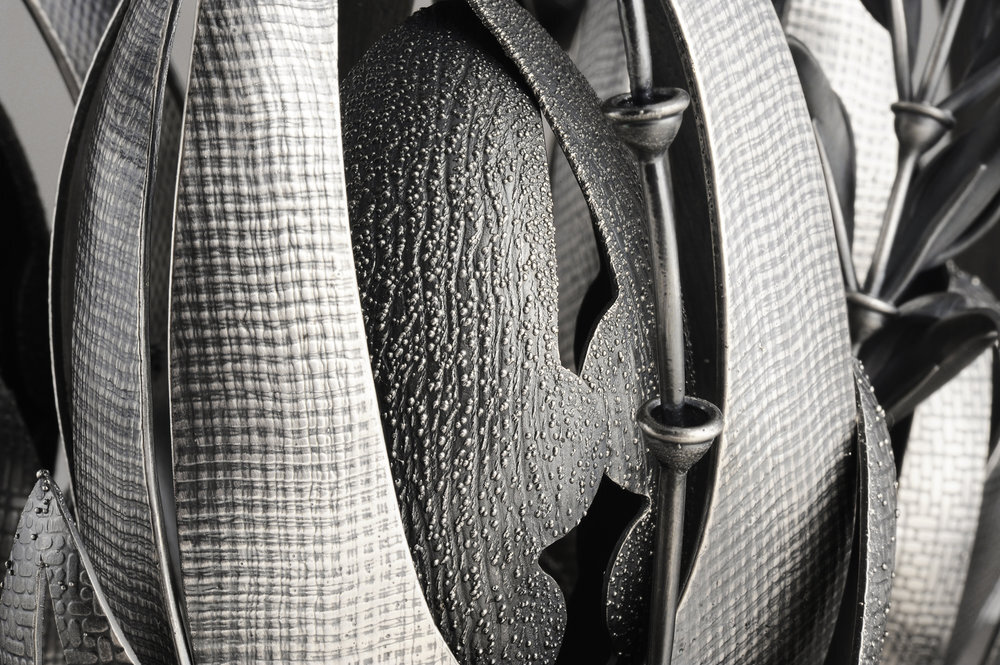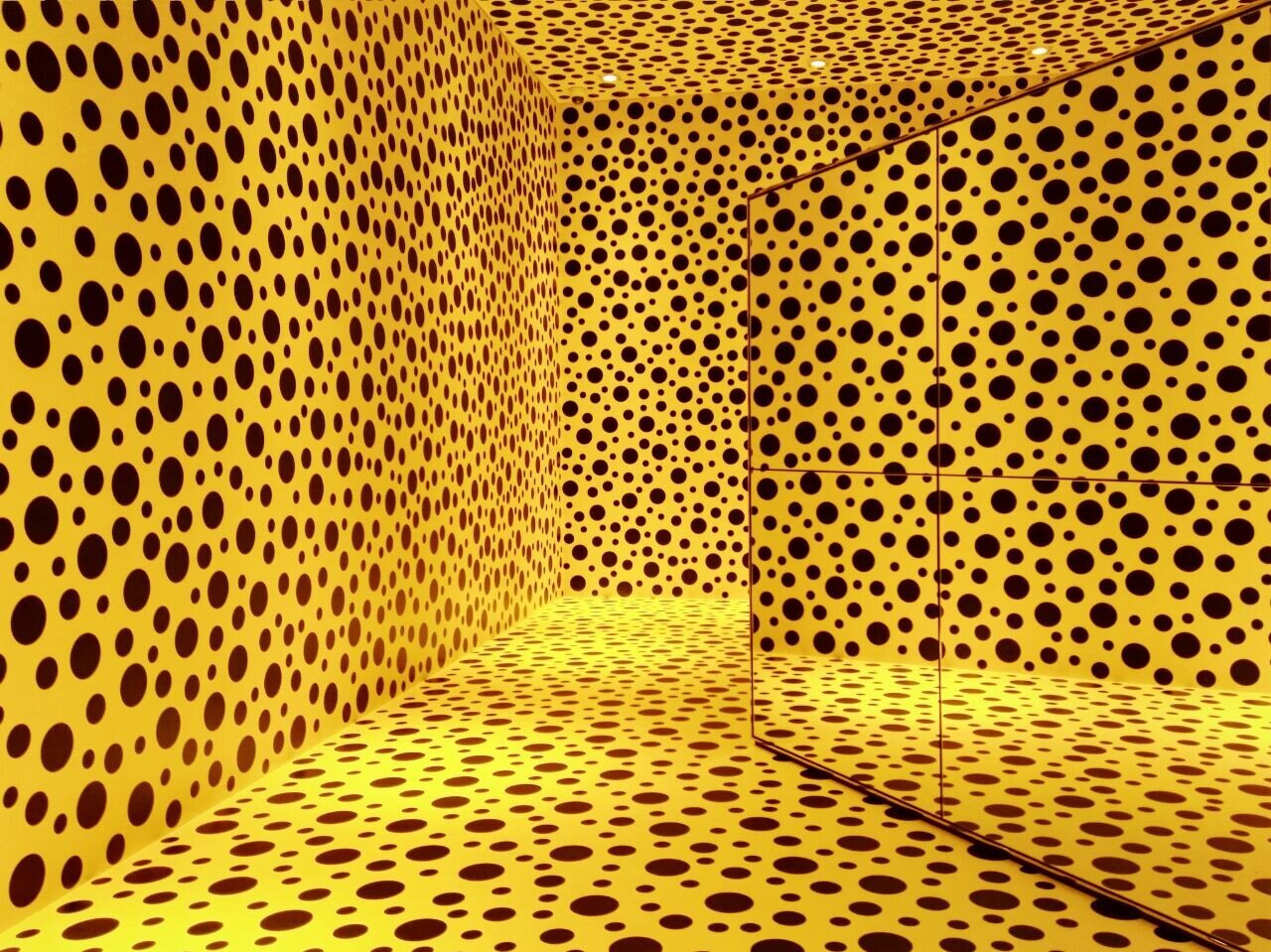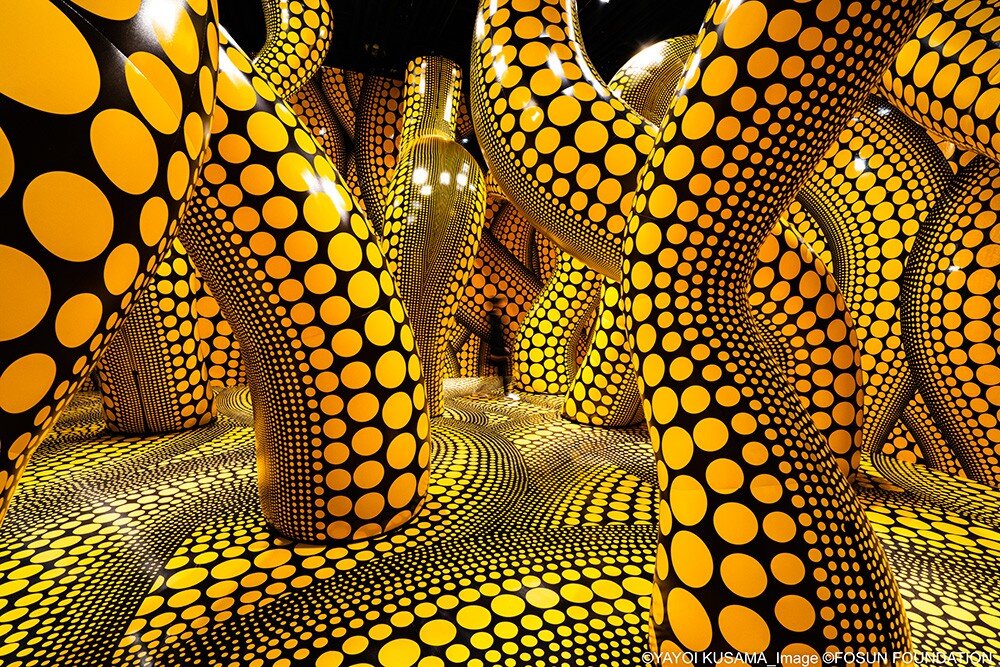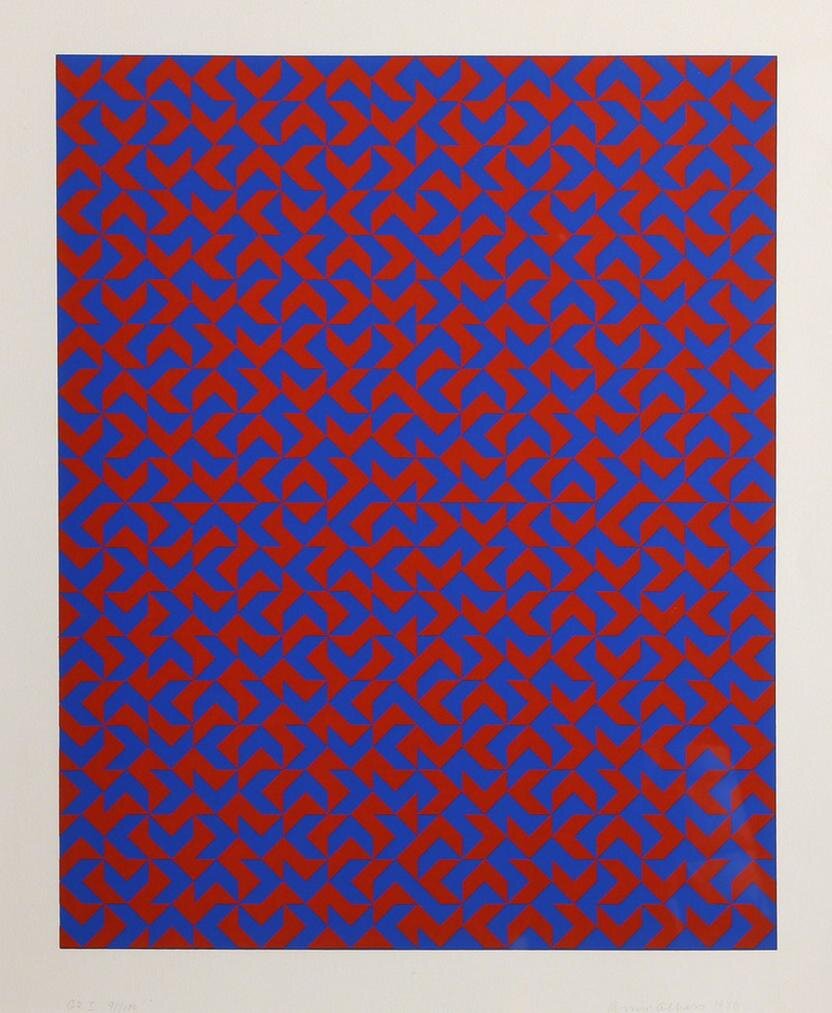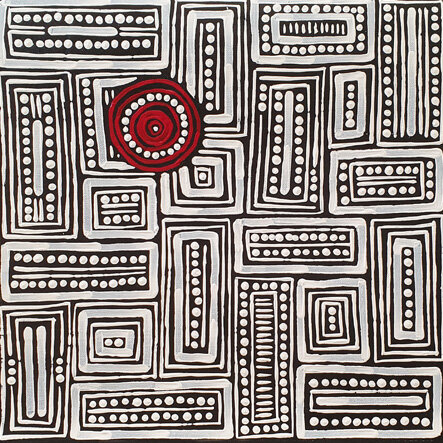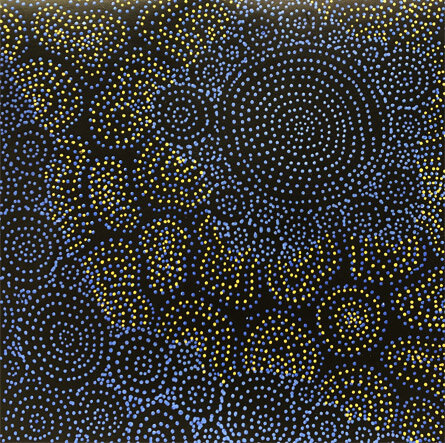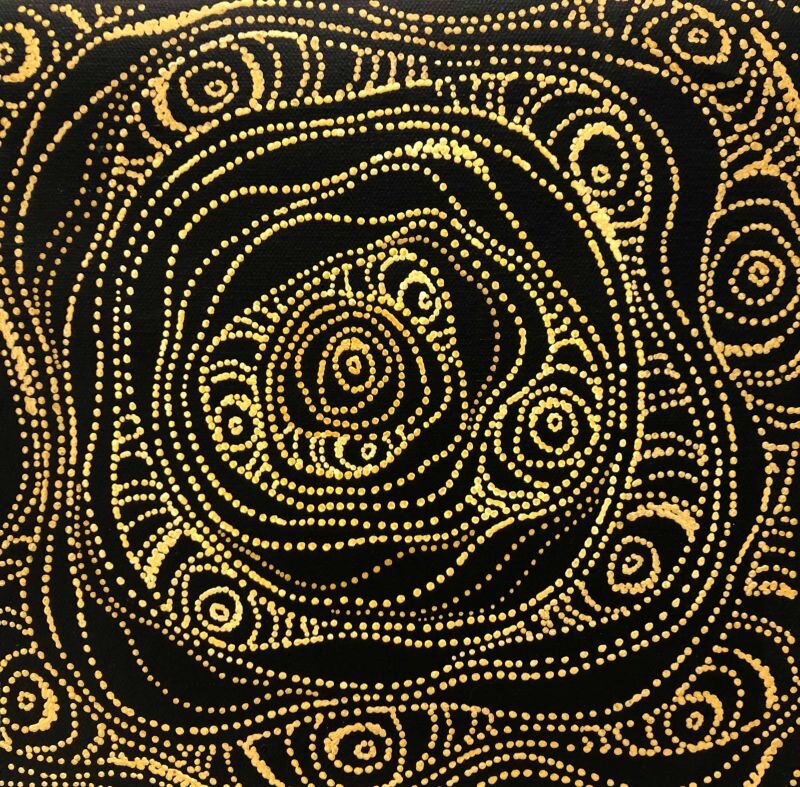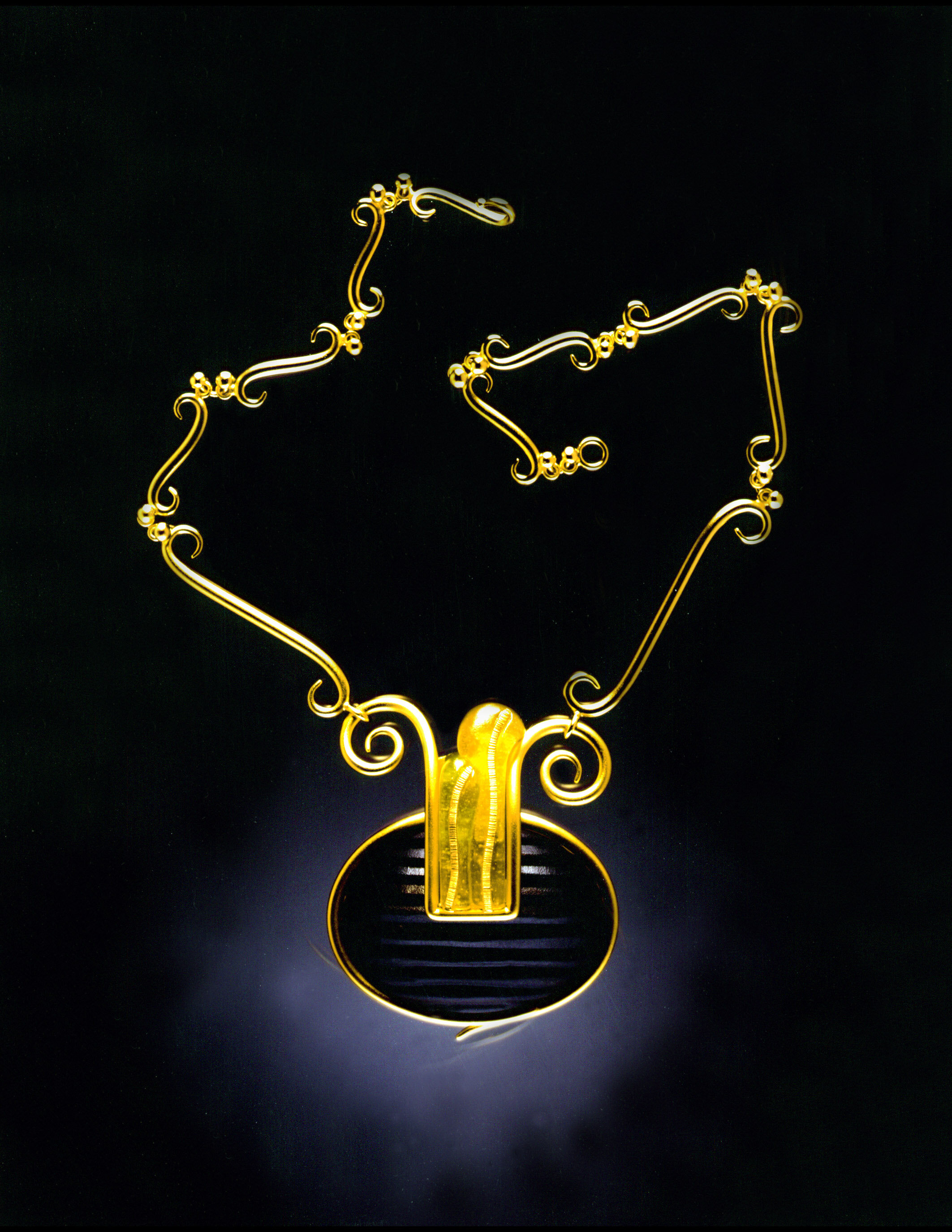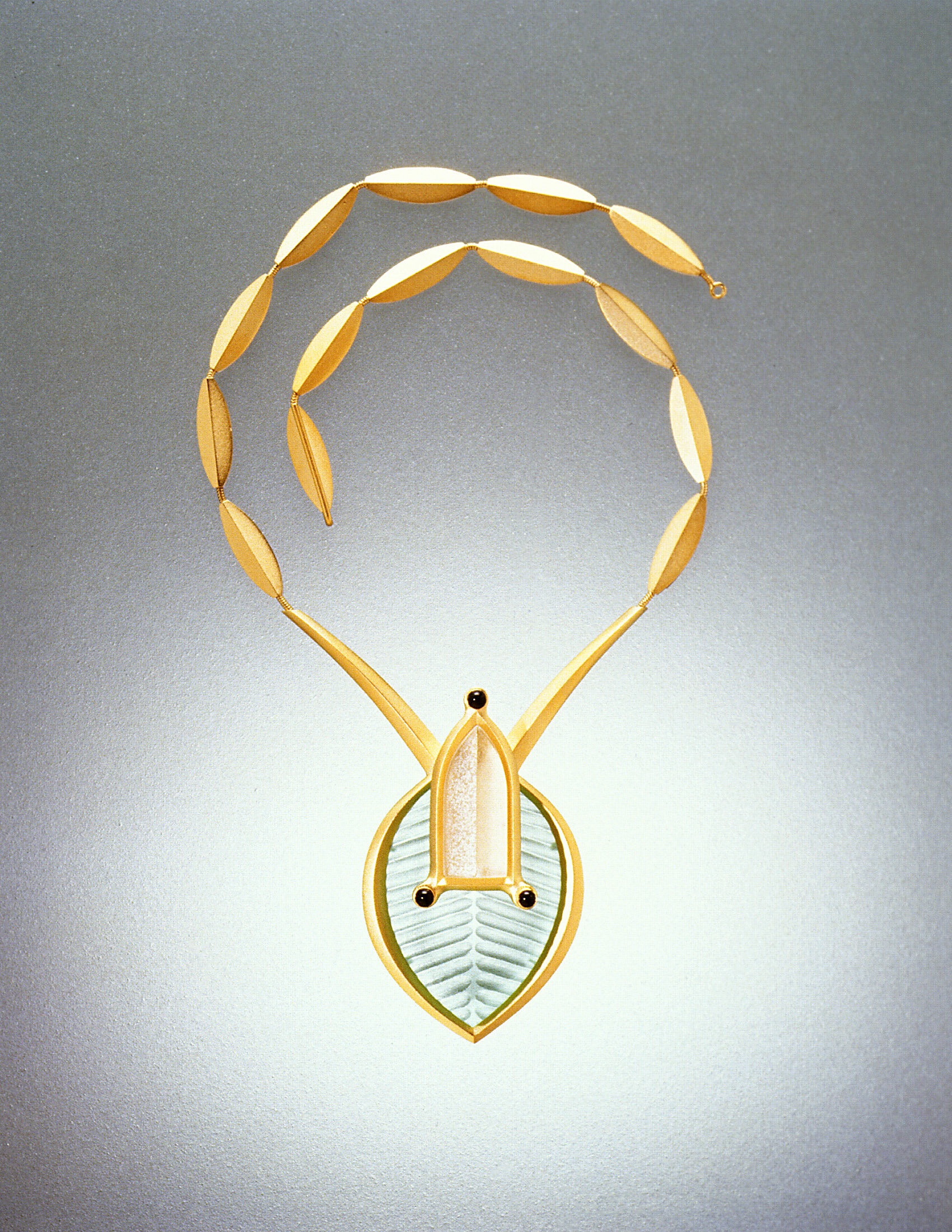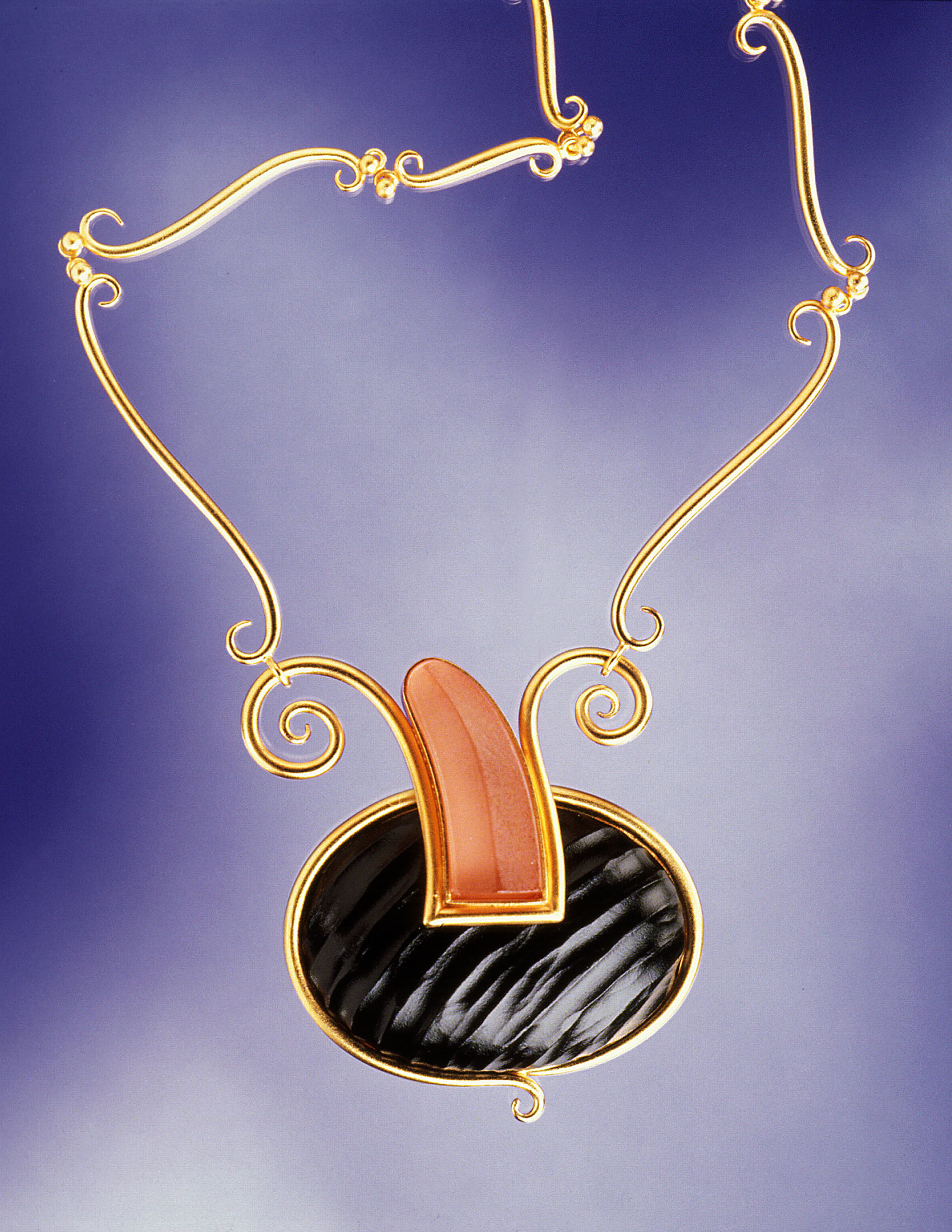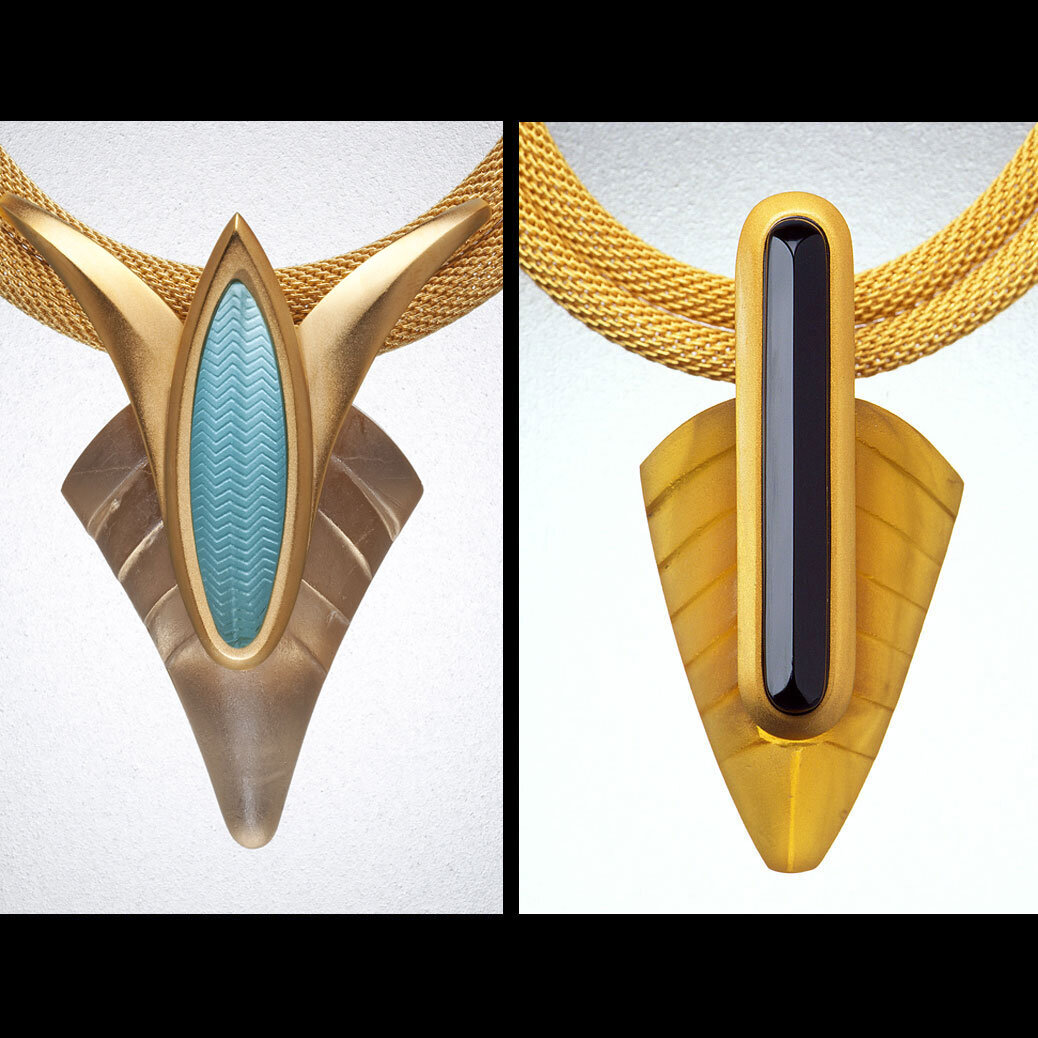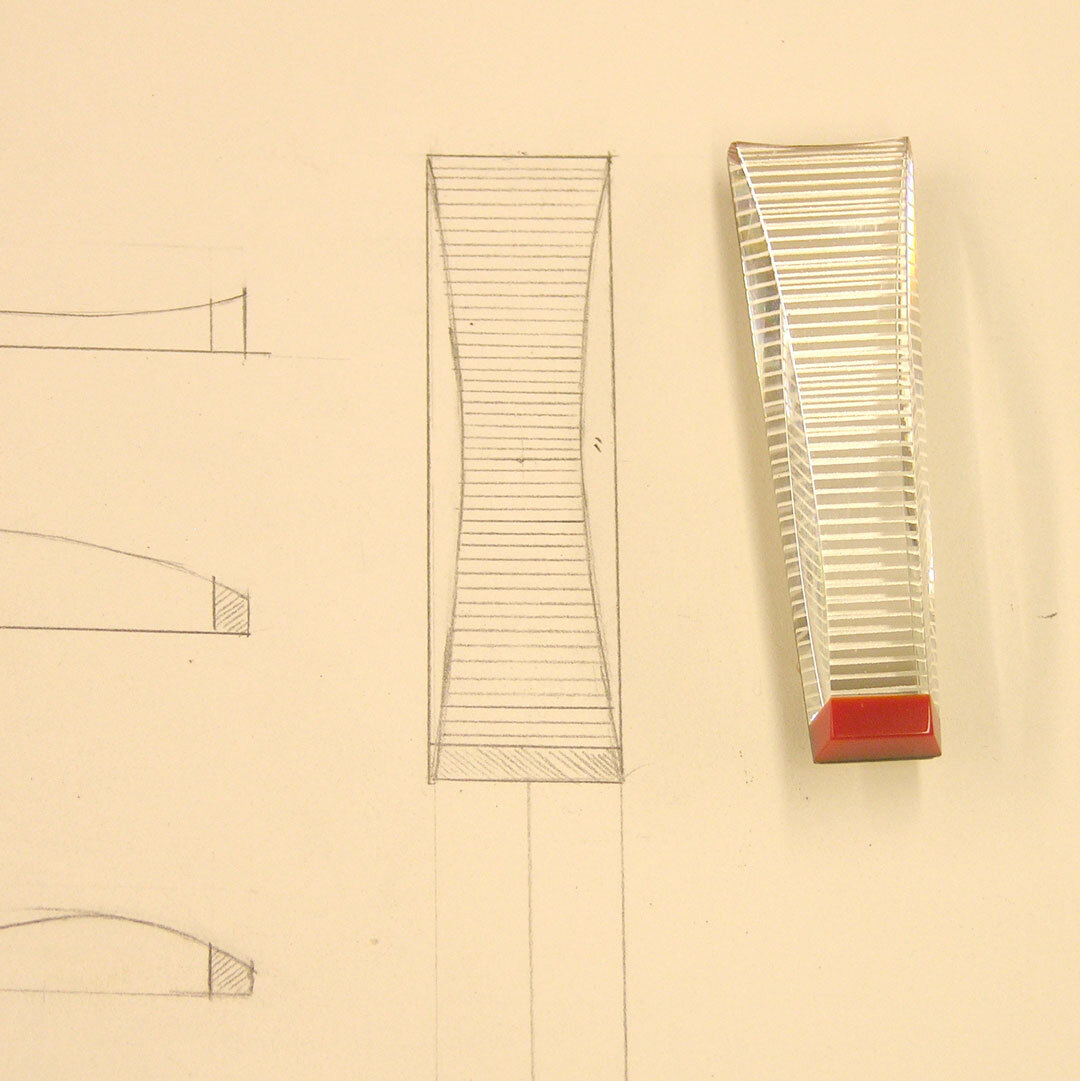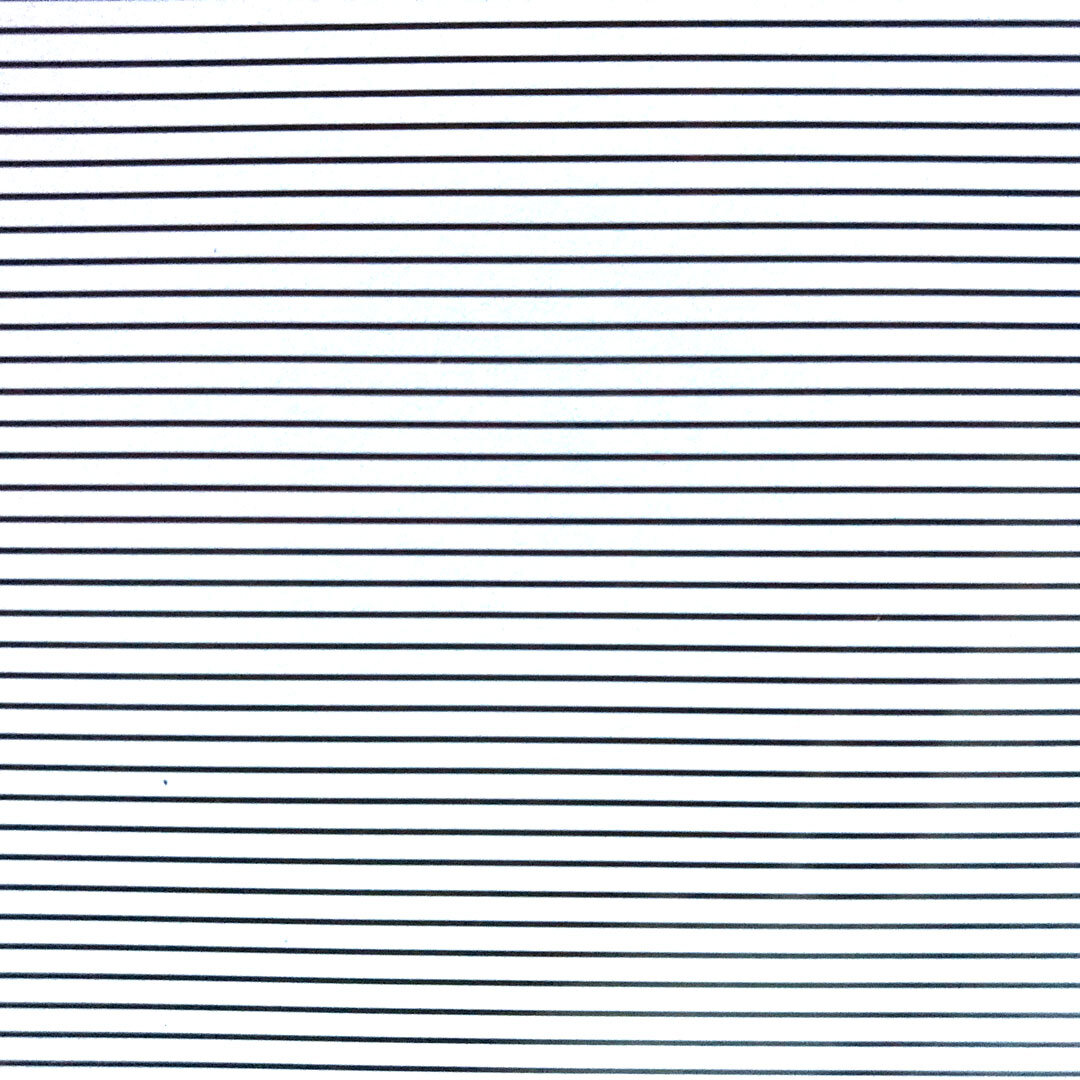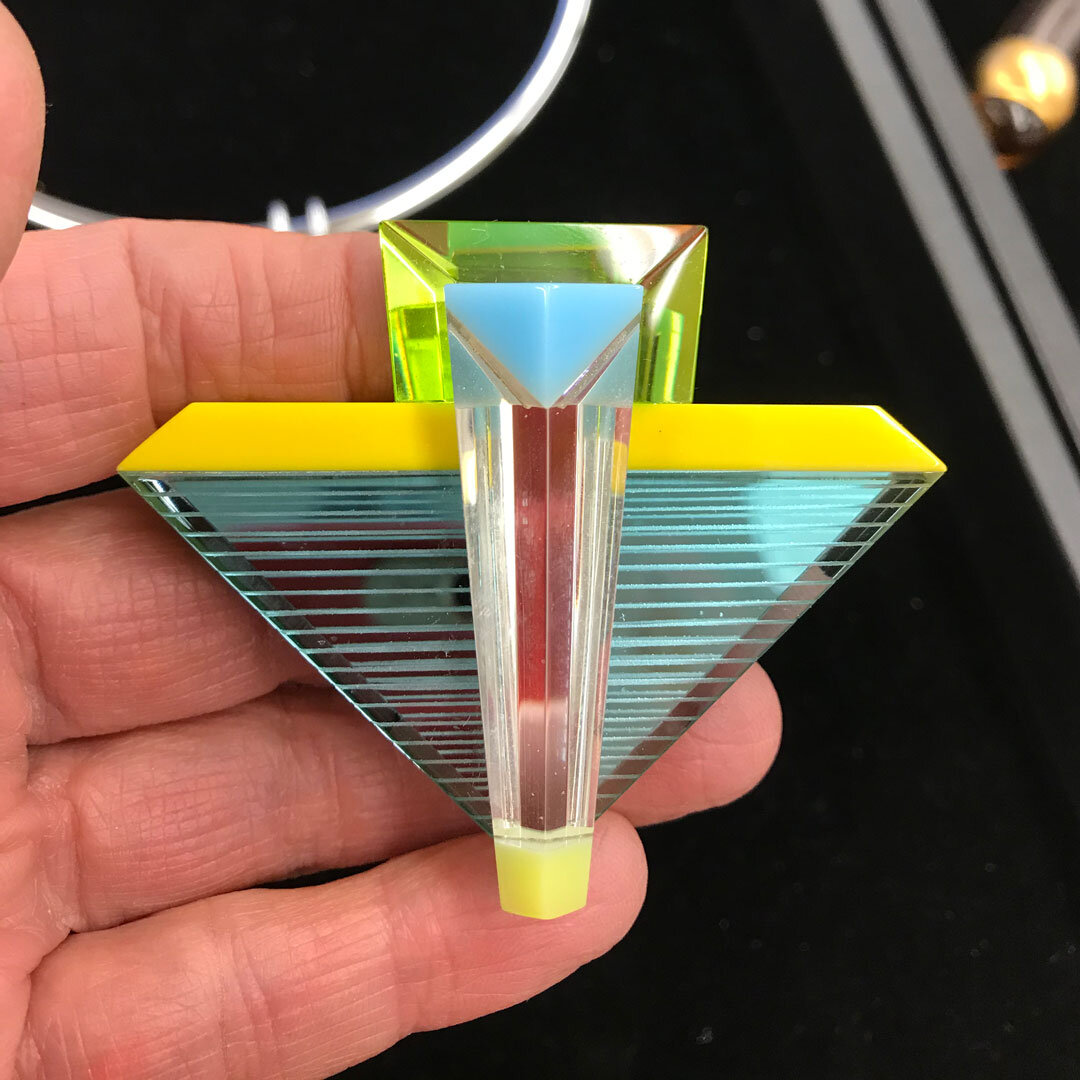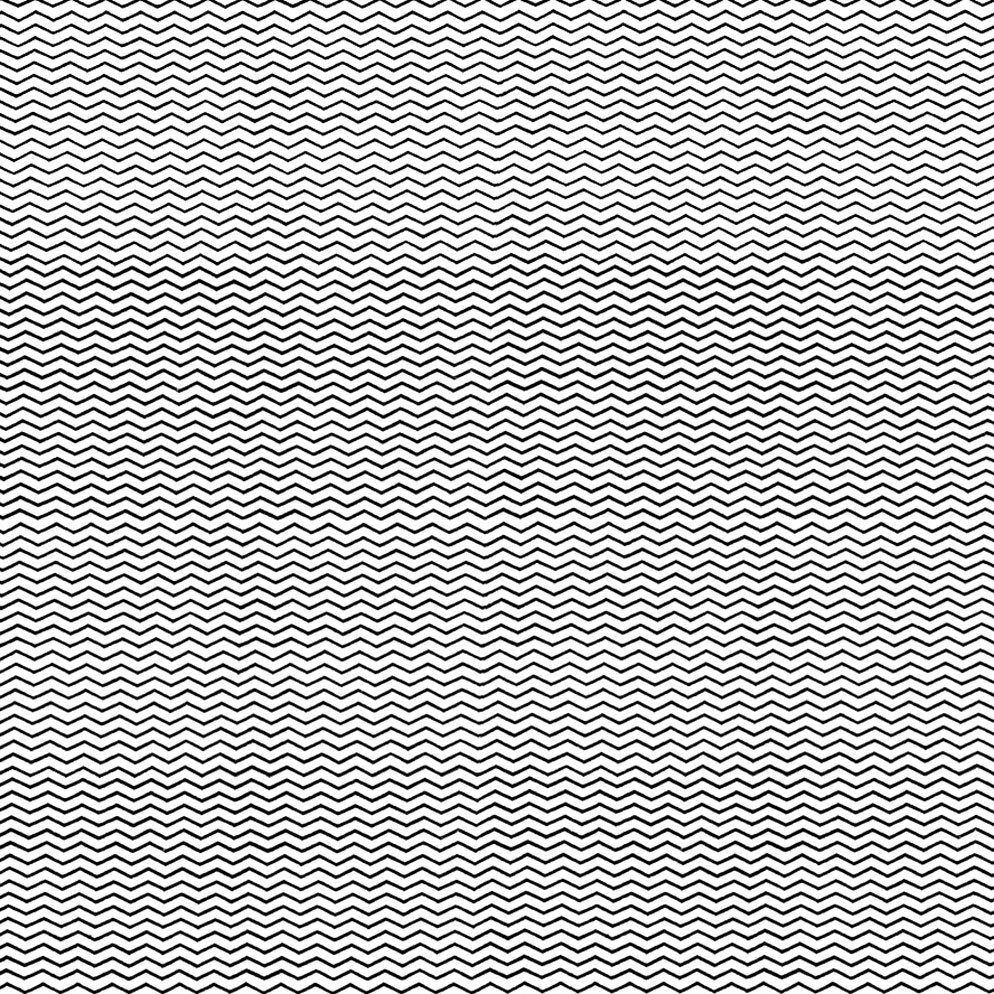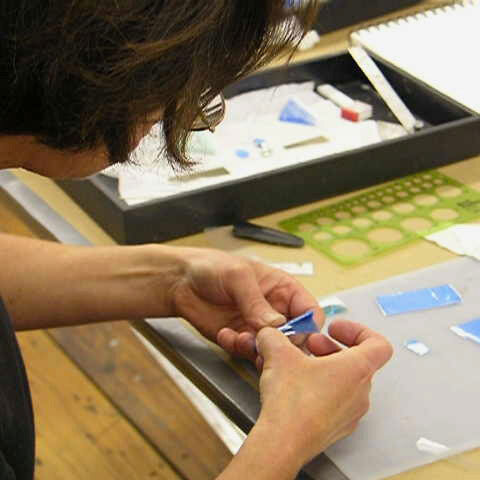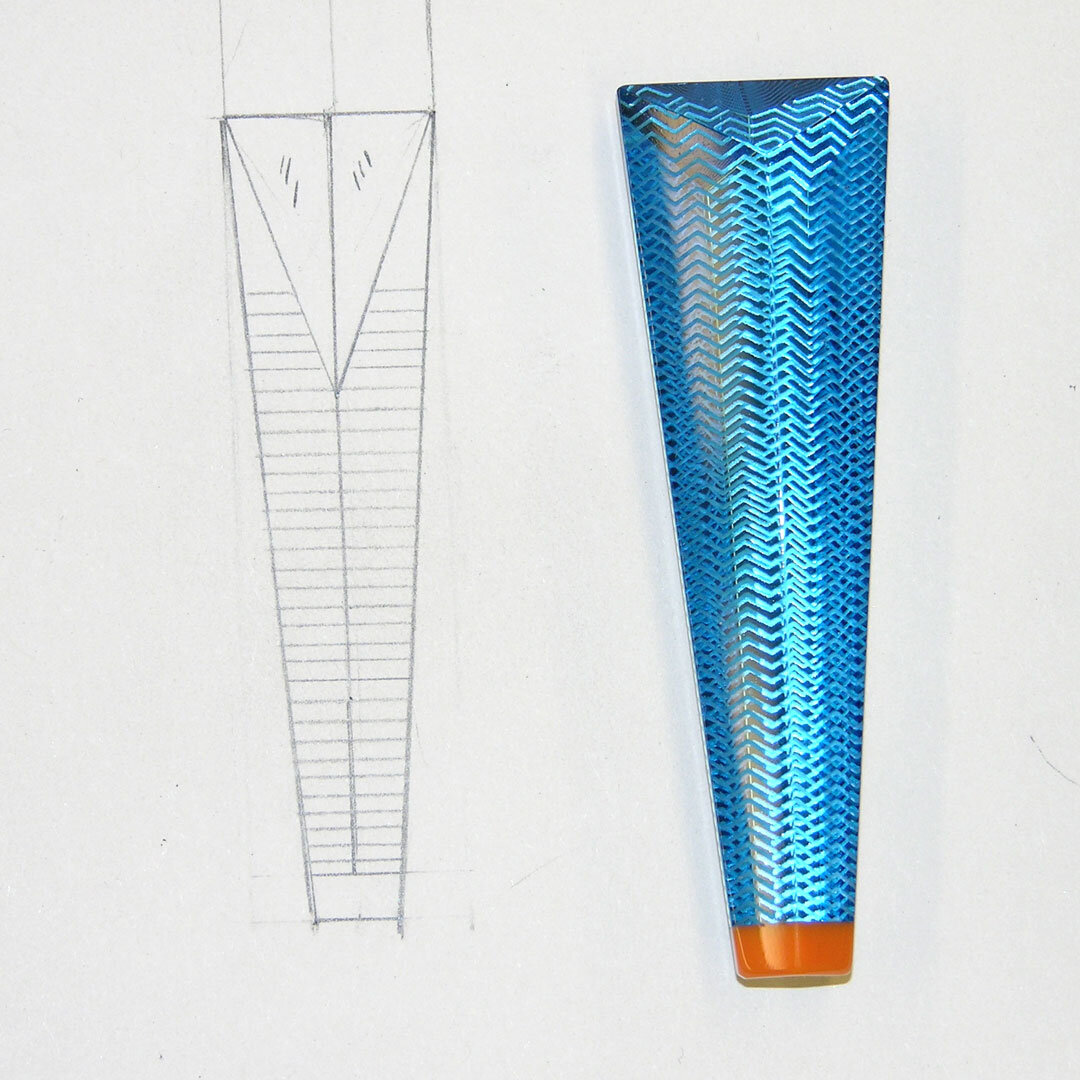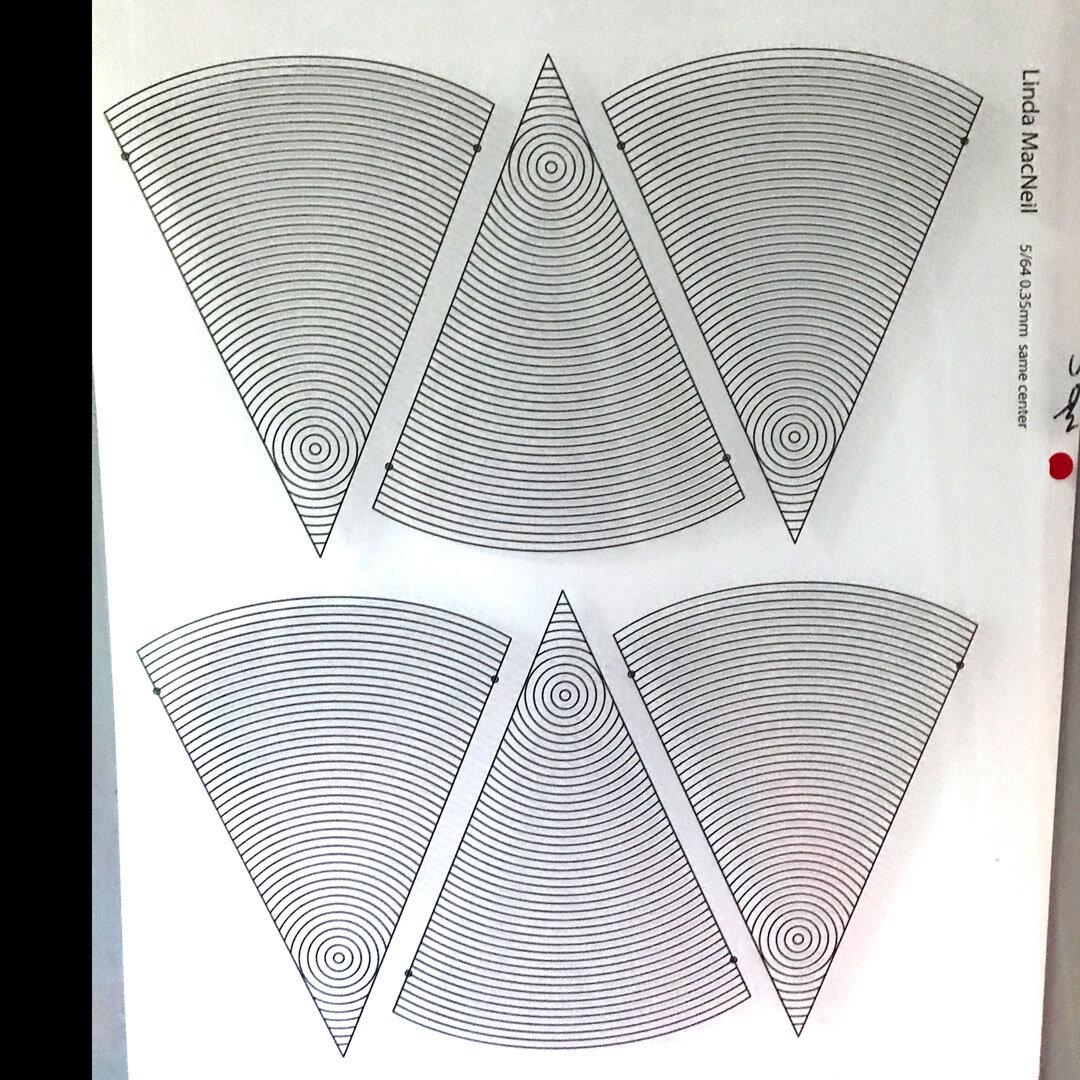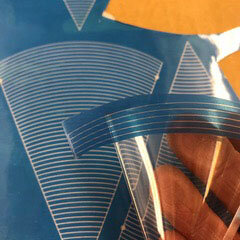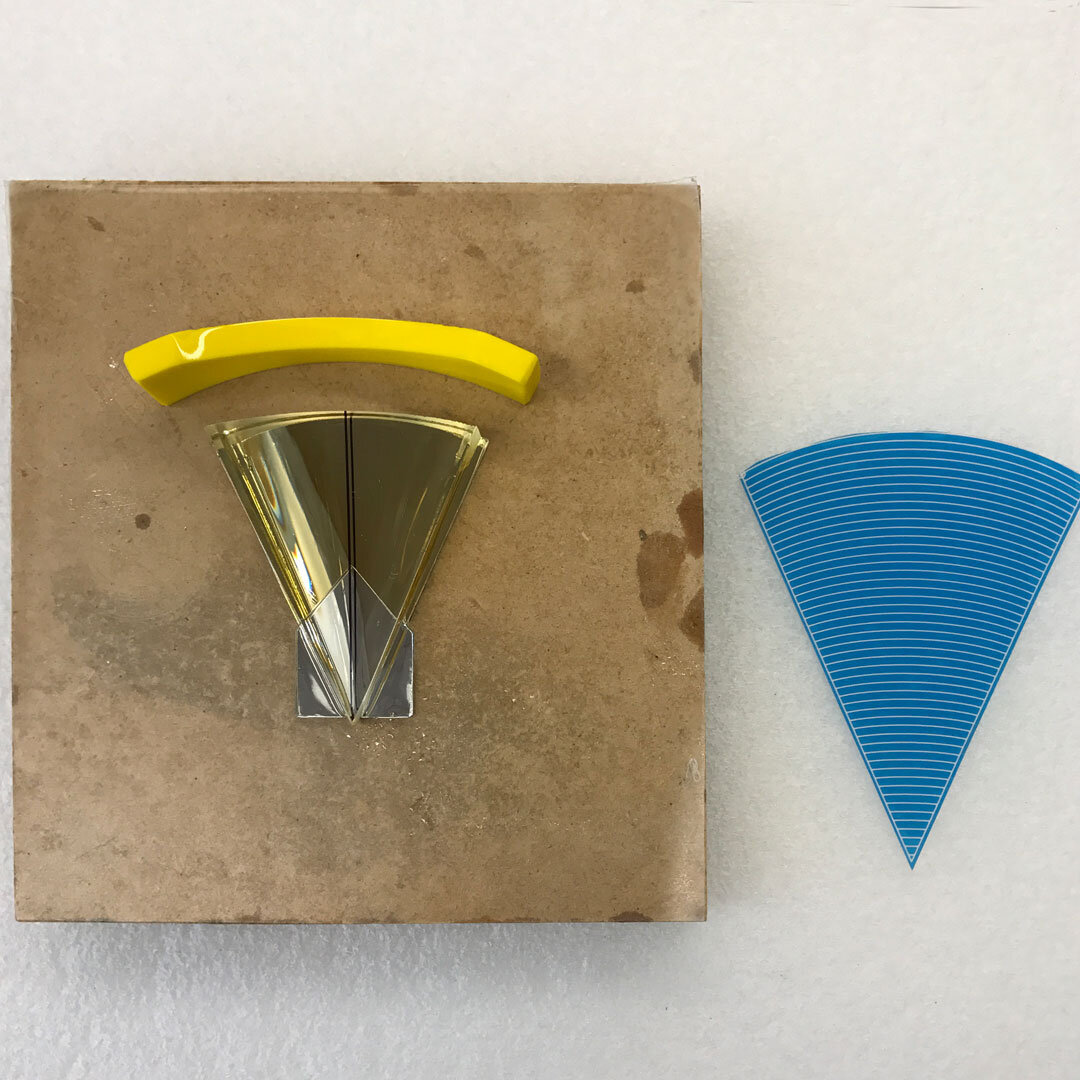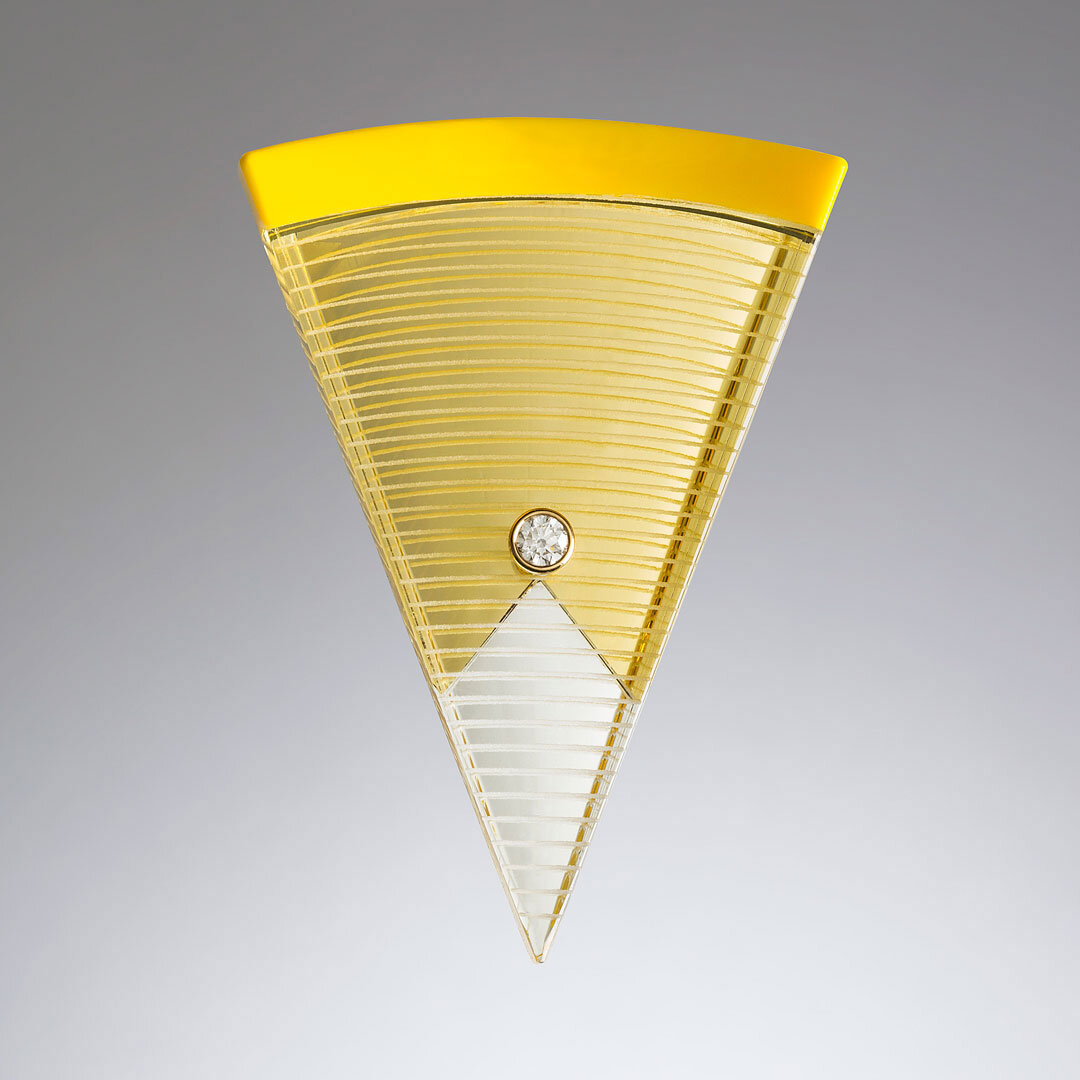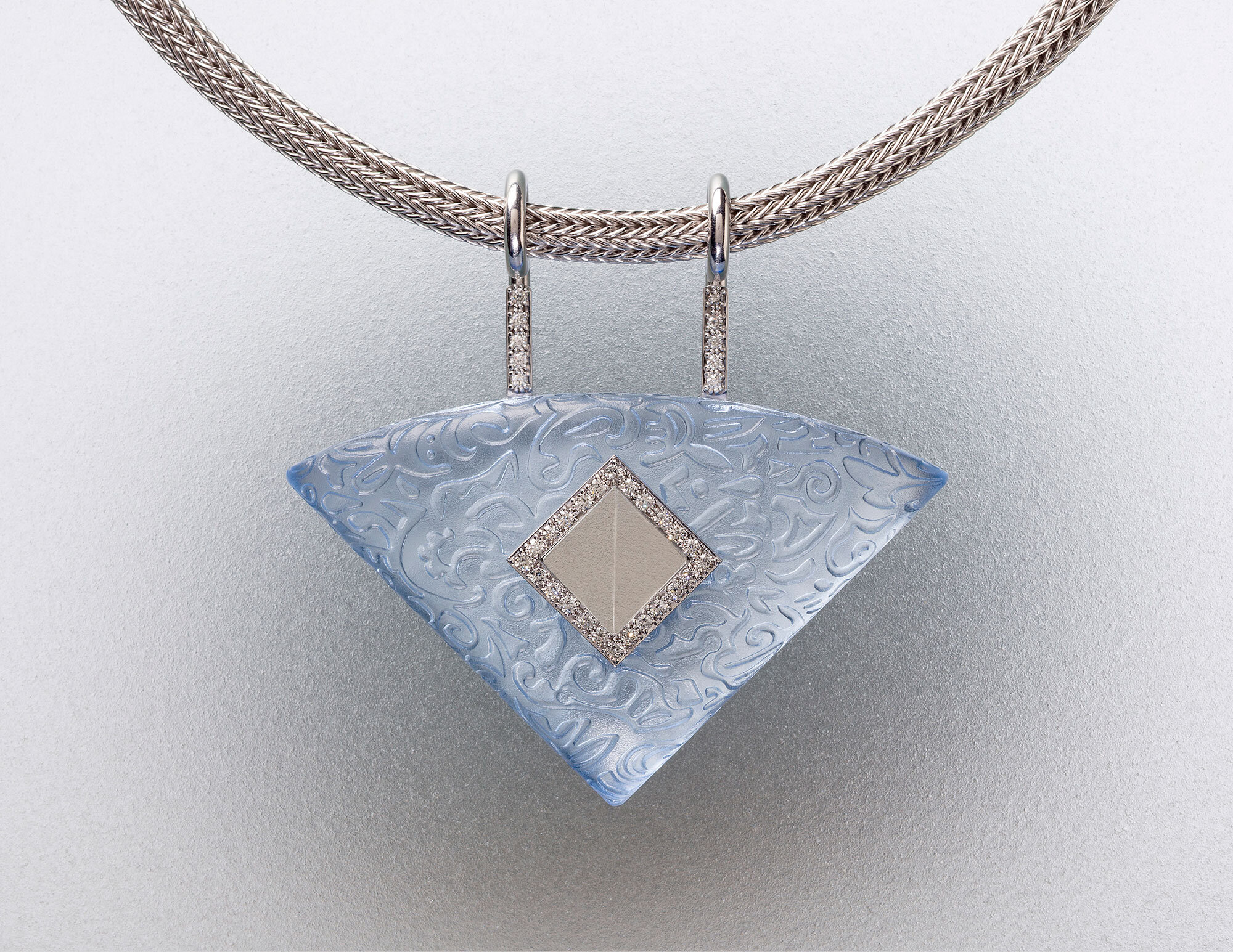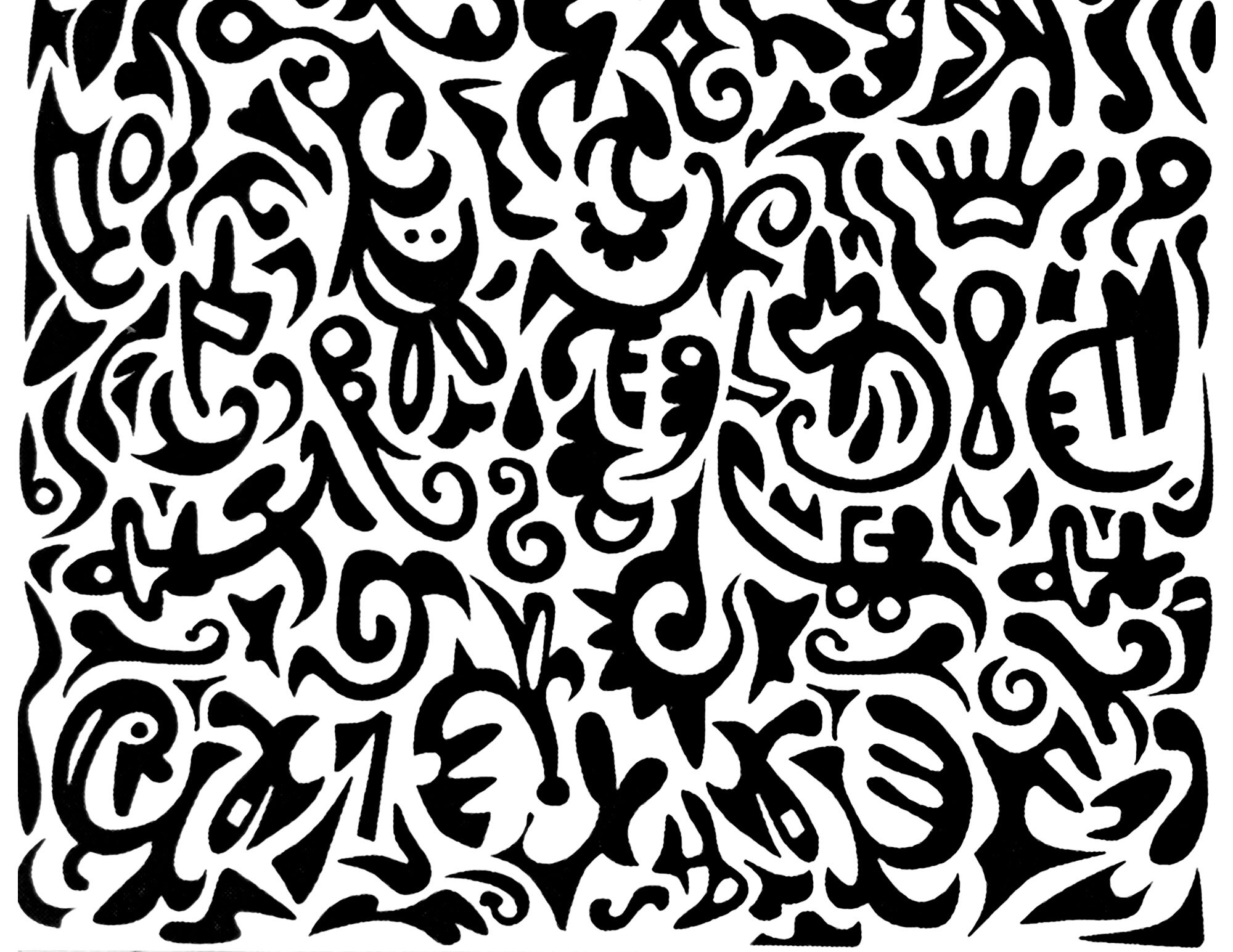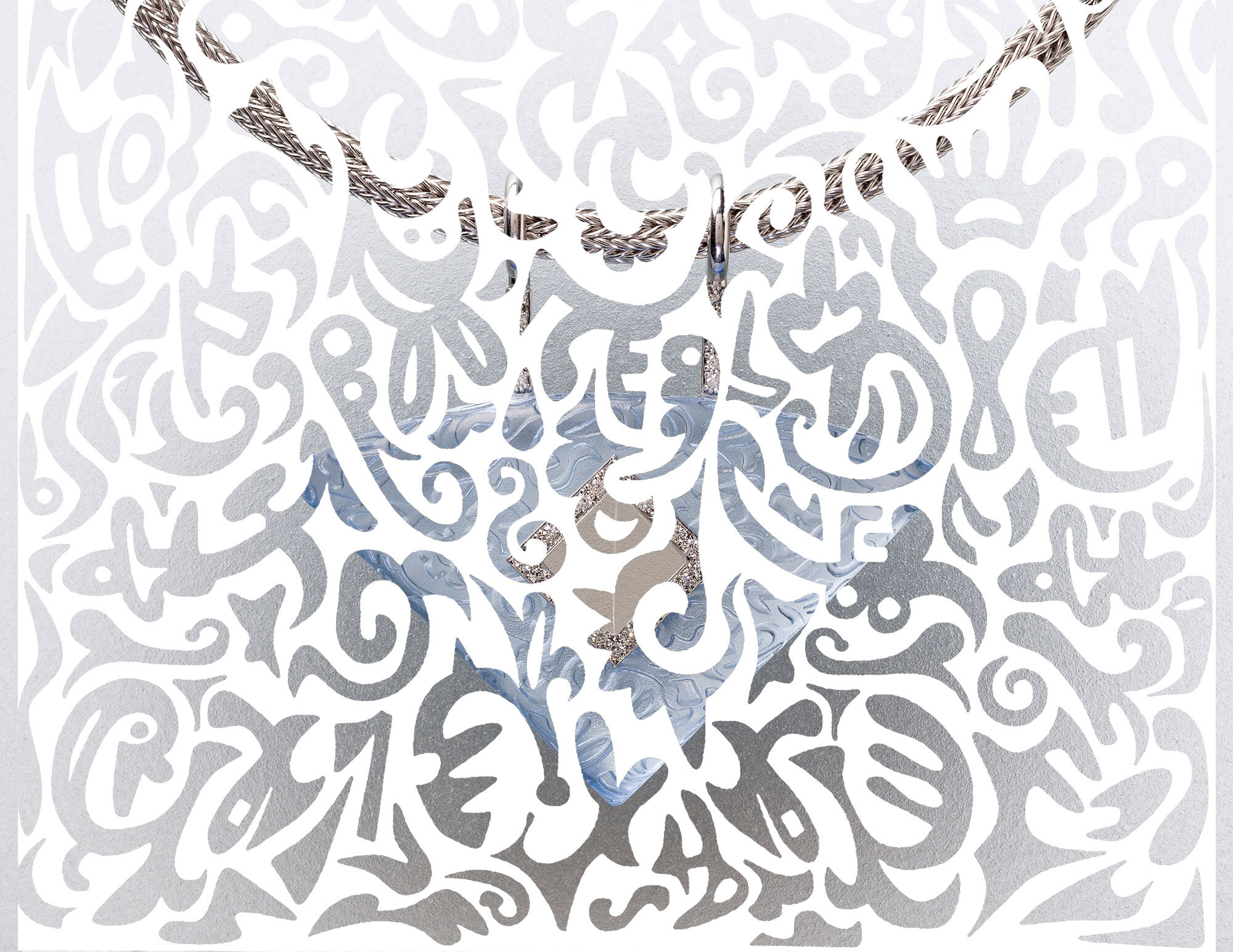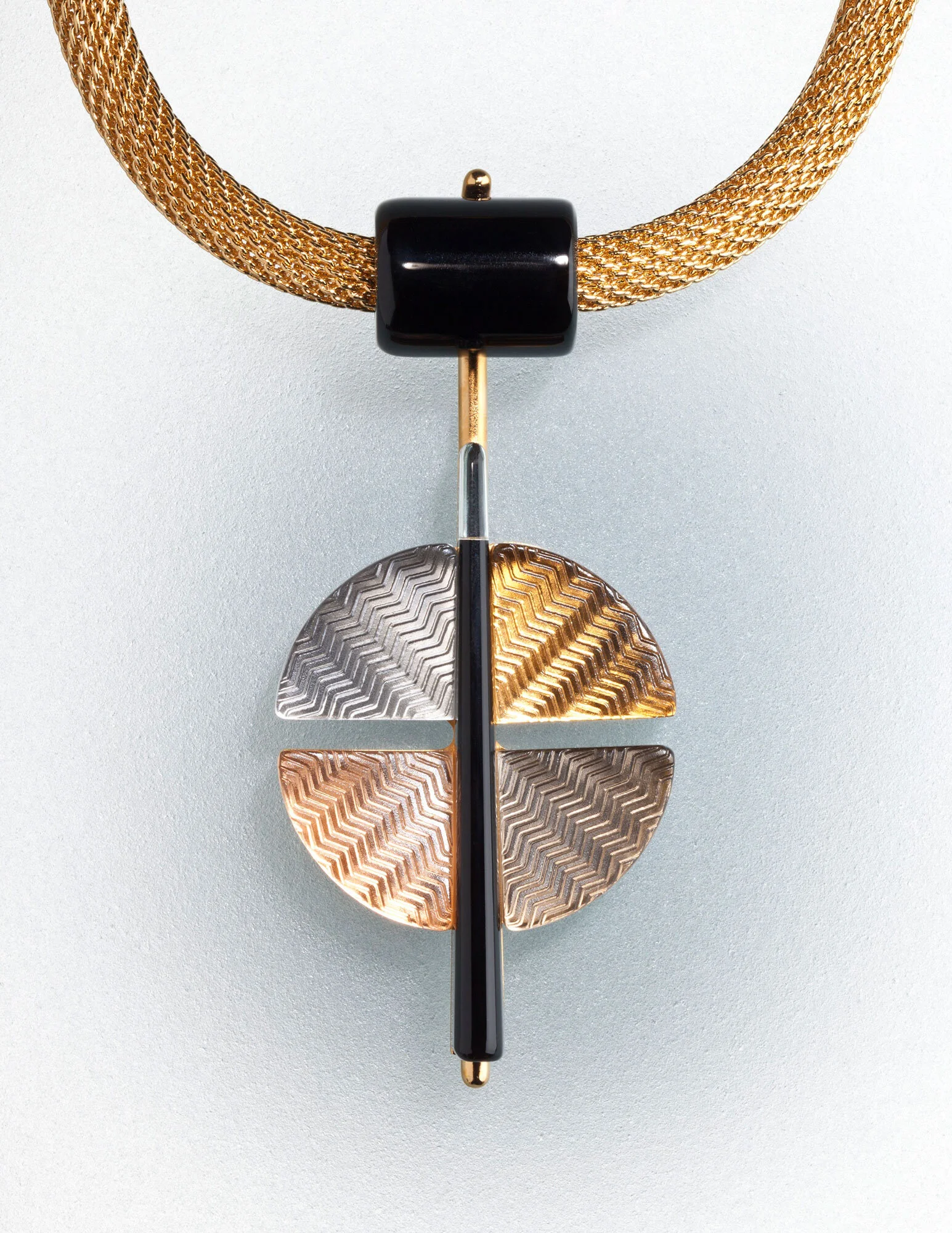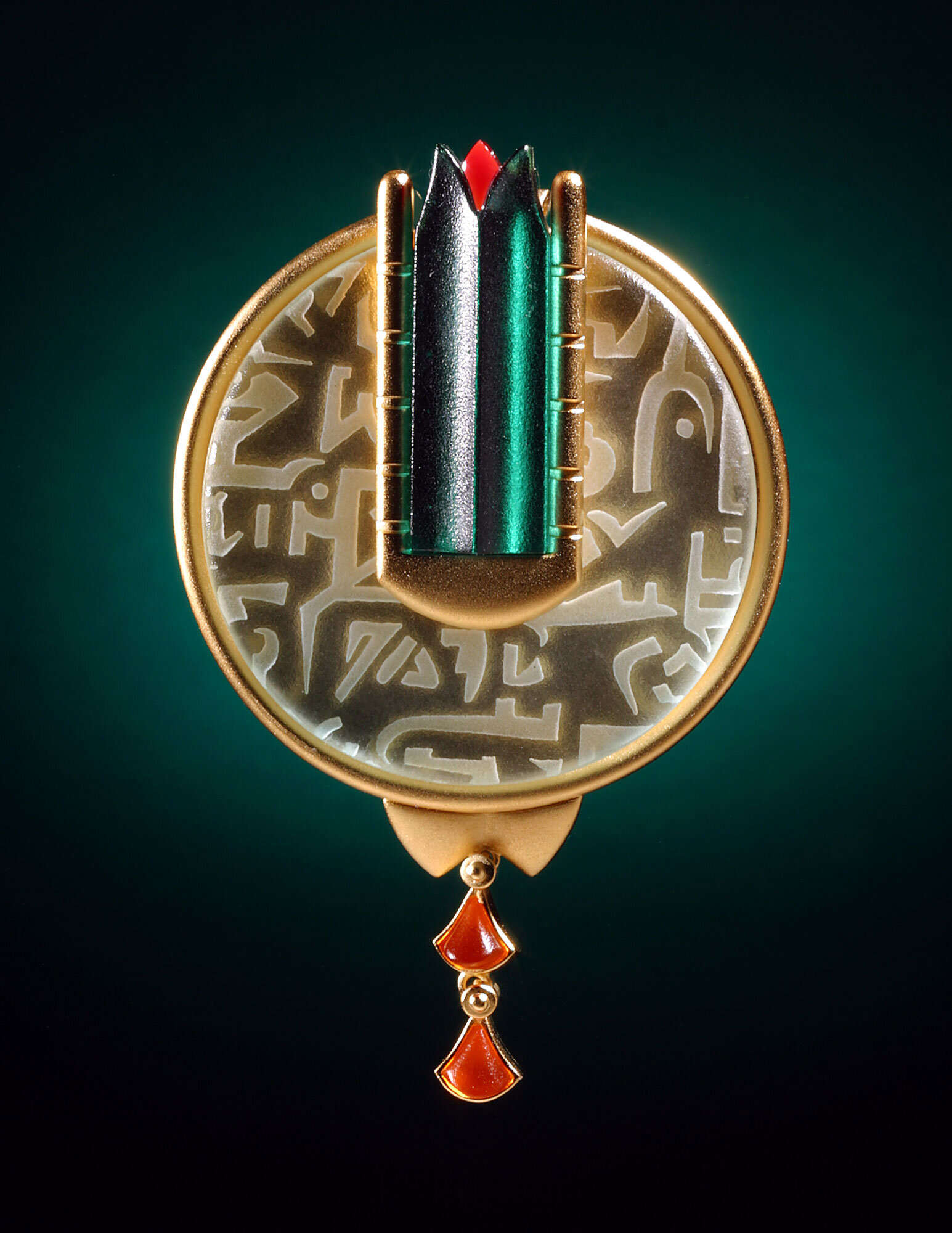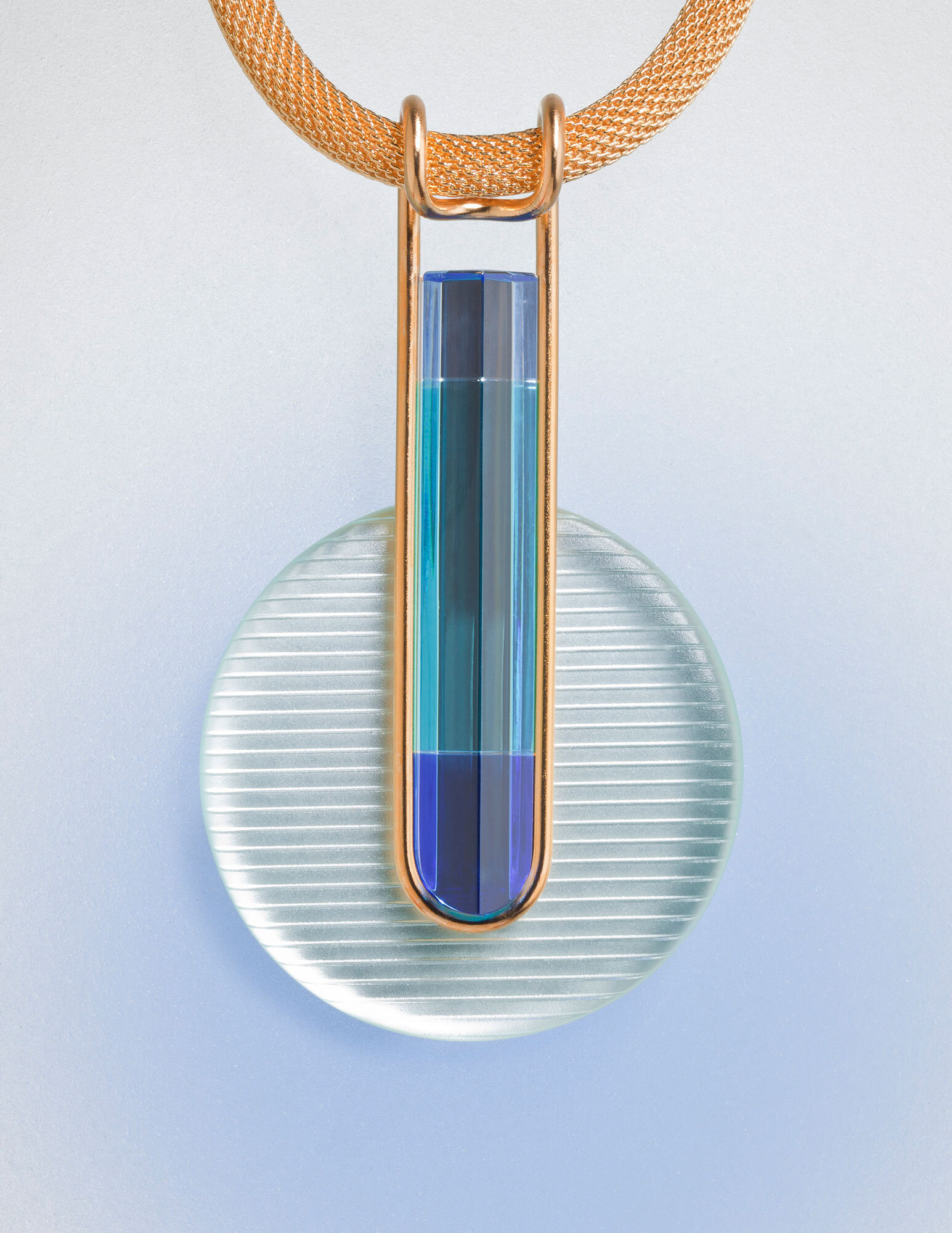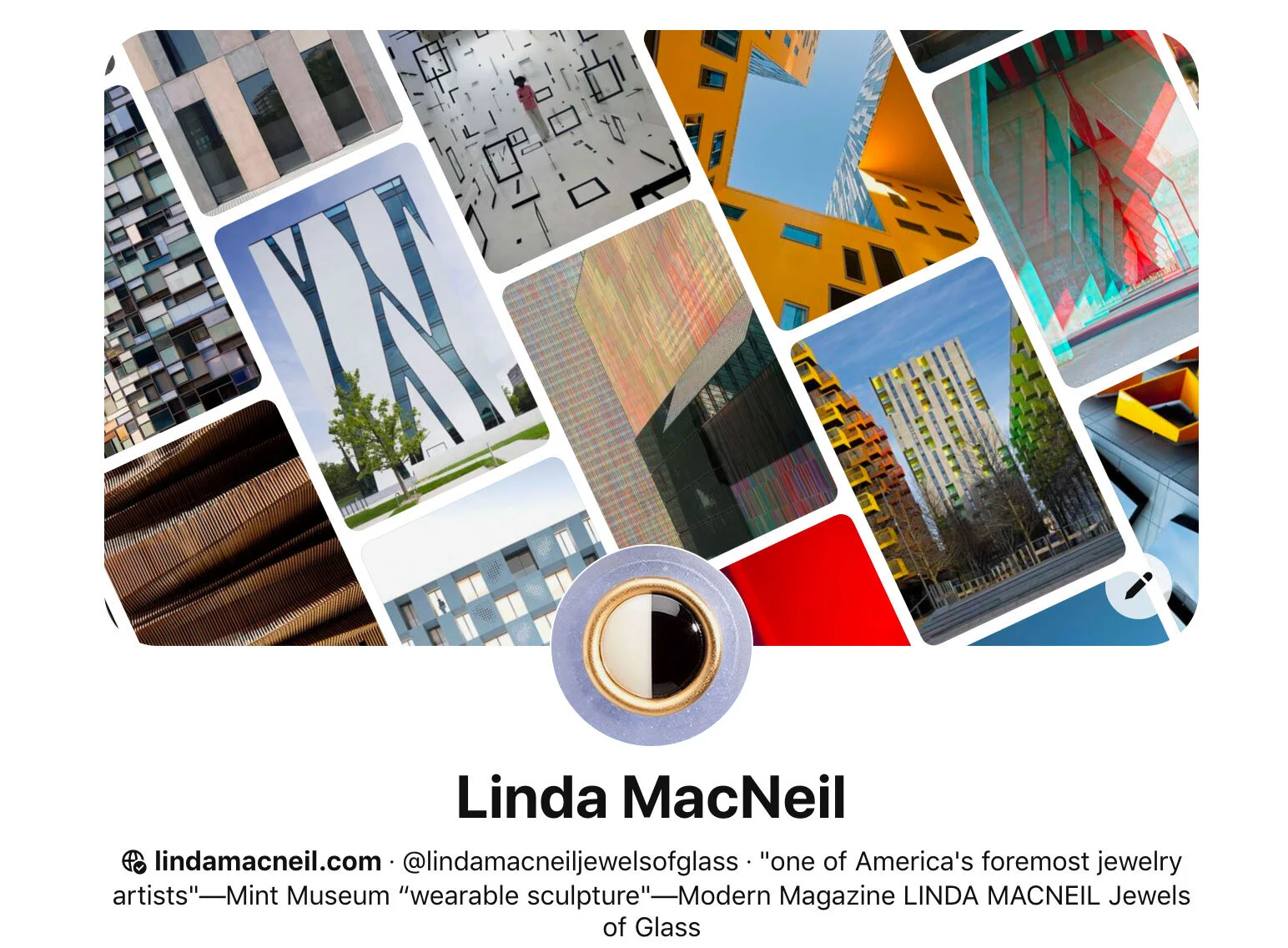Q: Patterns have been part of the vocabulary of art since ancient Egypt. Which pattern artists of today do you admire?
MACNEIL: There are several. Of my contemporaries I admire Linda Threadgill (she works in metal), Yayoy Kasuma (she works with color, light and space), and younger artists, Sarah Moris (paint/mural artist) and Sarrita King (painter). From mid century modern I like the work of Anni Albers (print and textiles).
Q: How are patterns applied in glass?
MACNEIL: There are three processes I use to create pattern in glass. Diamond Cut, Kiln Cast and a Stencil Sandblasting process.
Diamond Cut
Patterns can be cut with diamond wheel on a lathe
Images: Floral Series No. 1,2,3 &7
Kiln Cast
Pattens can be carved into wax molds and kiln cast
Image of my Mesh Series Numbers 85 & 64
Stencil Sandblasting Process
I use this process the most. Patterns can be sandblasted into the surface of the glass. That process works like this:
1 The design concept is developed into a refined hand drawing in black and white.
2 The drawing is then digitized and the file is sent to a stencil company that makes specific stencil products for applying to glass. There are two stages, first, the original black line drawing is applied to clear vellum, then a blue stencil on vellum with an adhesive backing is made from this.
3 The glass elements must be completely finished (polished) before they can receive the stencil.
4 I then carefully apply the stencil to the glass surface, rub gently first, then once in place rub with more pressure to insure the stencil is securely attached to the glass surface.
5 The glass is now prepared for sandblasting. The areas of the glass that are protected by the stencil do not receive the cutting grit under pressure. During the sandblasting process, the unprotected exposed area of the pattern will be slowly eaten away and the protected area will be raised and is still smooth and polished once the stencil is removed.
6 Some of the element's surface are acid polished further while other elements are left as they are, revealing the polished and blasted patterns.
[Below] Original pattern drawing and Mesh Series No. 140, 2013. Private collection.
Here are a few more examples of my works that use pattern.
Q: Where do you look for inspiration when you are developing new patterns?
MACNEIL: Building surfaces and facades, tiles, textiles, Art Deco, Lalique and more, you can see ar wider range on my “Patterns Applied” Pinterest board - click here.
